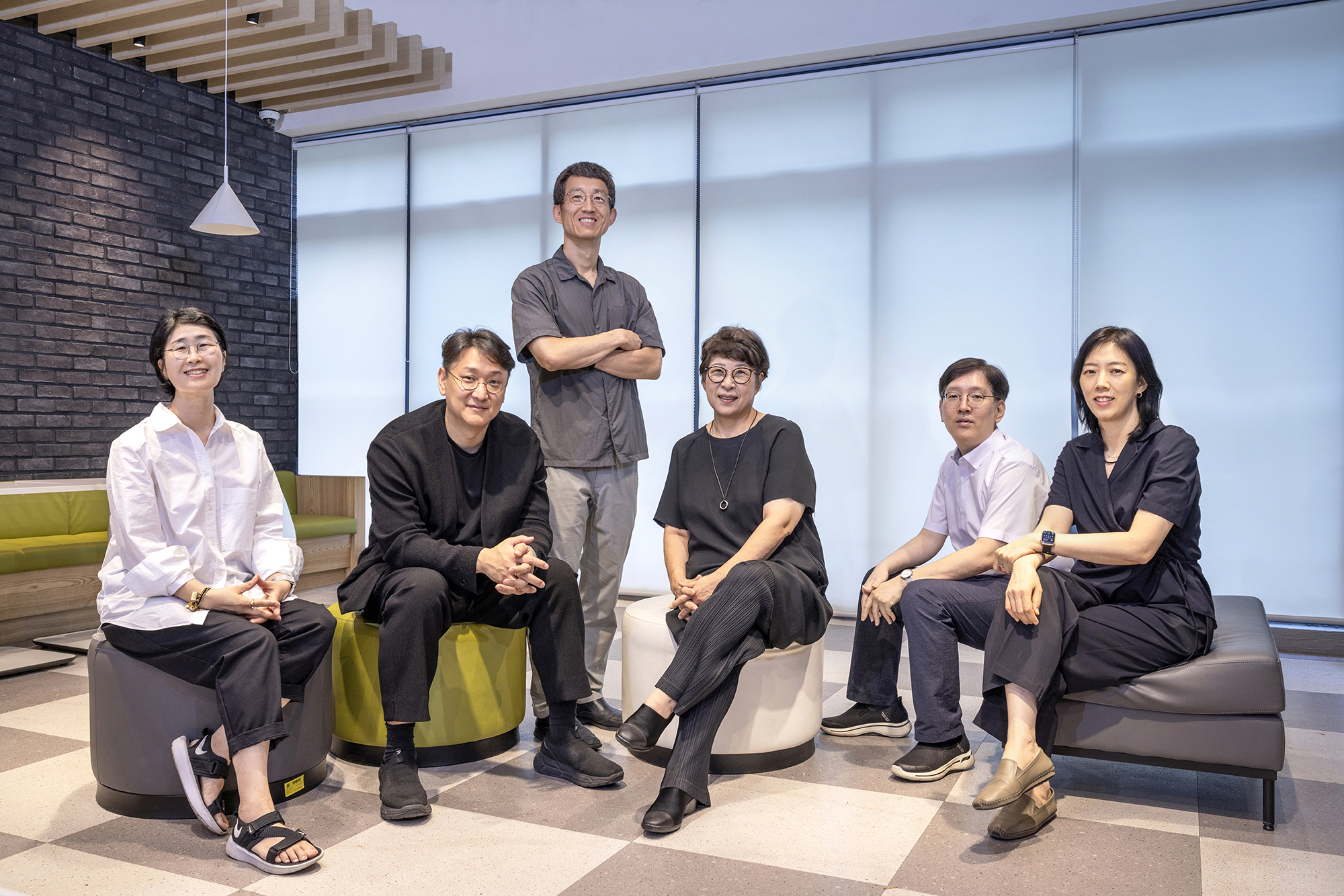- The Power of Design, Creating the Most Important Value of Our Time July 02, 2024
-
The Power of Design, Creating the Most Important Value of Our Time
The essence of the Department of Integrated Design is educating human-centered design talent
that reflects the social, cultural, technological, and future environment
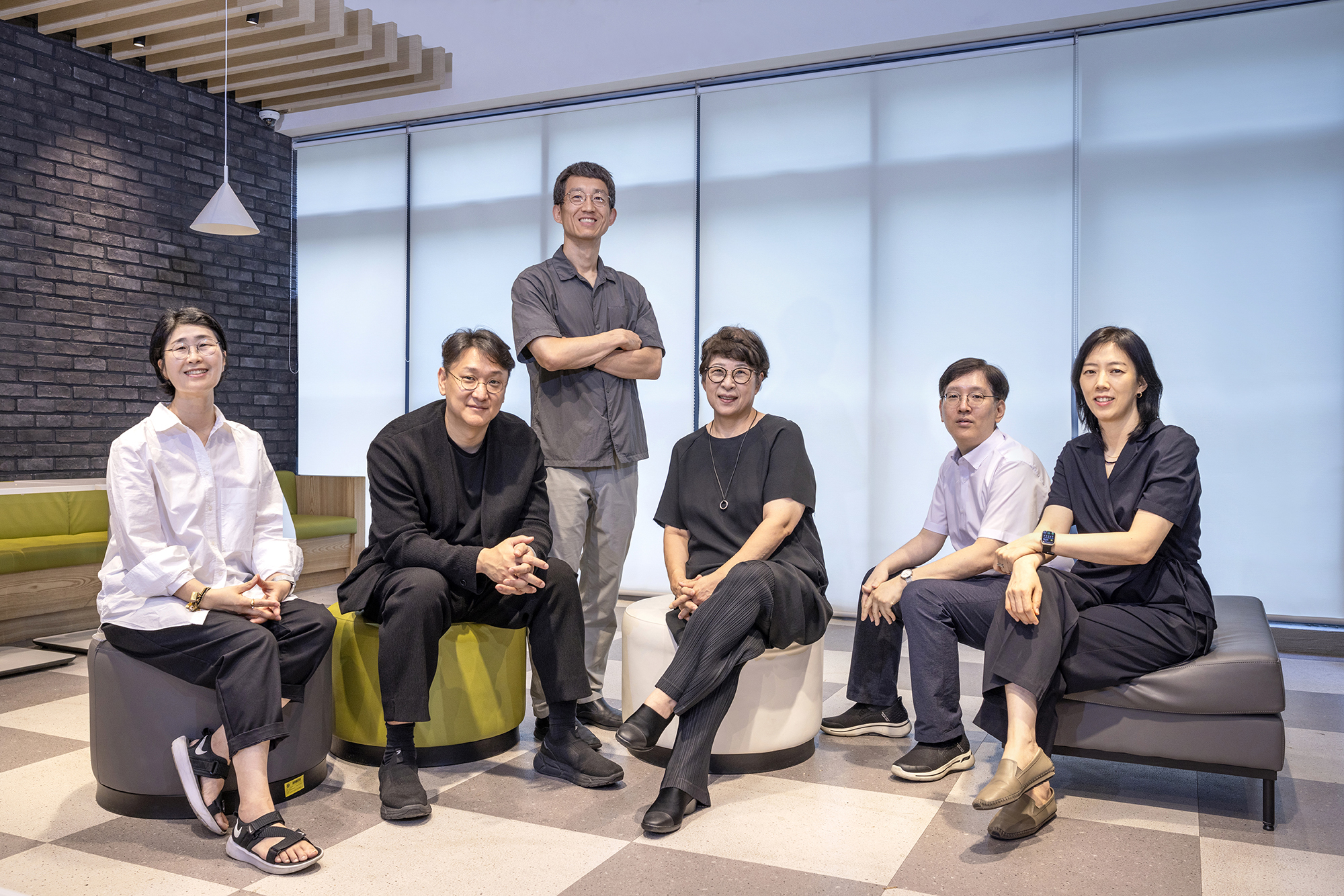
Design has the power to facilitate connections across industries, unifying business, marketing, art, and humanity to make our lives more valuable and enriching. Design adds convenience and transforms an ordinary product or service into something unique and beautiful, thereby satisfying and delighting its users. Design is a powerful tool for solving global challenges and improving human wellbeing. Interest in design has been growing among humanity in the 21st century.
Yonsei University offers several courses that provide design education, thus fostering interdisciplinary communication and problem-solving skills. The undergraduate programs include the Department of Integrated Design in the College of Human Ecology and the Culture and Design Management (CDM) and Information and Interaction Design (IID) majors in the Humanities, Arts, and Social Sciences (HASS) Division of Underwood International College and the Division of Design and Art (Industrial Design, Visual Communication Design, Digital Art) at Mirae Campus. The Graduate School of Communication and Arts, a professional graduate school, offers a major in Visual Studies that encompasses film, media, and visual design. What is the experience of studying design at Yonsei? The professors of the Department of Integrated Design have set out to answer the following questions.
Q. What are the key strengths and characteristics of the Department of Integrated Design at Yonsei University?
Our department’s greatest strength is its limited size and its extensive range of specializations. Our current faculty roster includes seven full-time members and just under 30 students per grade level. At first glance, this might appear disadvantageous, but it offers a great environment for those seeking to gain experience in different fields and identify their area of specialization, with the benefit of close guidance from professors. The department’s curriculum requires students to study at least two of the following design disciplines: product, fashion, and communication. The collaboration of students from diverse backgrounds leads to new ideas and exposure to tools they had never imagined.
What distinguishes them from other art school design students is their proficiency in analytical thinking. This is because the admission process does not require practical experience; many of our alumni have chosen to pursue careers as project managers or researchers in companies rather than artists. This is, of course, relative, and it depends on the period and the individual’s inclinations. We offer programs for students who are interested in design and enjoy creative work or possess a range of skills beyond artistic abilities, including analytical, communication, and planning abilities, and wish to gain experience in multiple design disciplines.
Q. What fields are covered by the Department of Integrated Design? Please provide an overview of the curriculum.
The range of courses offered by our department is more comprehensive than that of other departments. Specifically, you may view courses by grade level (horizontally) and by major (vertically) because our department provides students with as many options as possible within the credit limits allowed by the school.
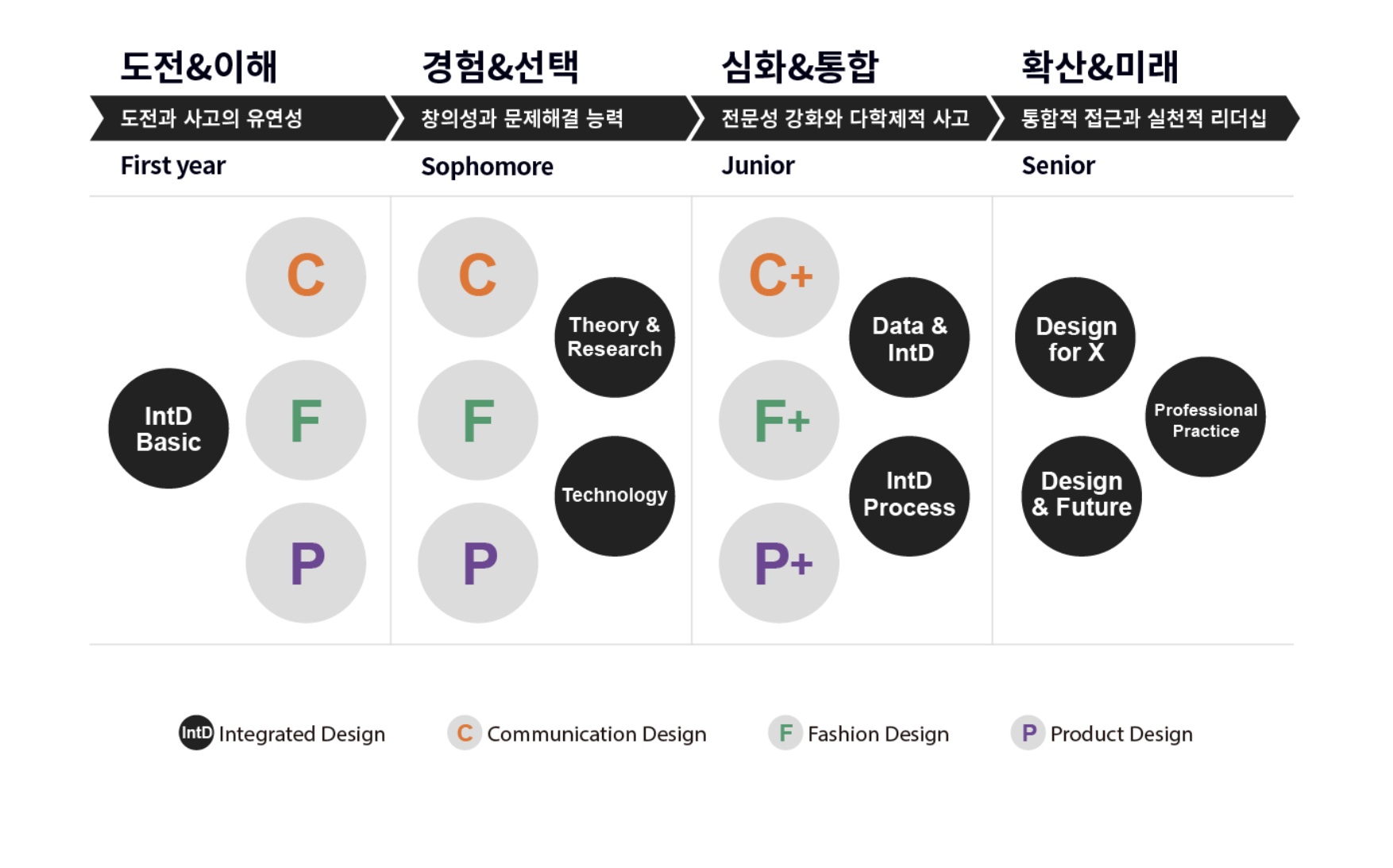
Let us look at the annual curriculum structure. The first year begins with an understanding of integrated design concepts and the exploration of foundational and formative principles and mediums in design to foster the challenging spirit and flexibility of thought that design professionals must possess. This is followed by the second year’s exploration and experience of detailed design areas, along with the study of integrative theory, design research, and technology. This enables students to formulate a detailed design curriculum to focus on within the scope of integrated design.
The third-year curriculum consists of coursework that exposes students to integrated design processes and methodologies. Thus, it builds on their expertise in a specific design area of their choosing and helps them become more integrated. The fourth year is designed to develop students into integrated design talent with deepened design competencies and practical leadership skills. This is achieved through project-based education that utilizes an integrated design approach to find and present creative and innovative design solutions. In addition, students undertake practical coursework that prepares them for entrepreneurship and entry into related industries upon graduation.
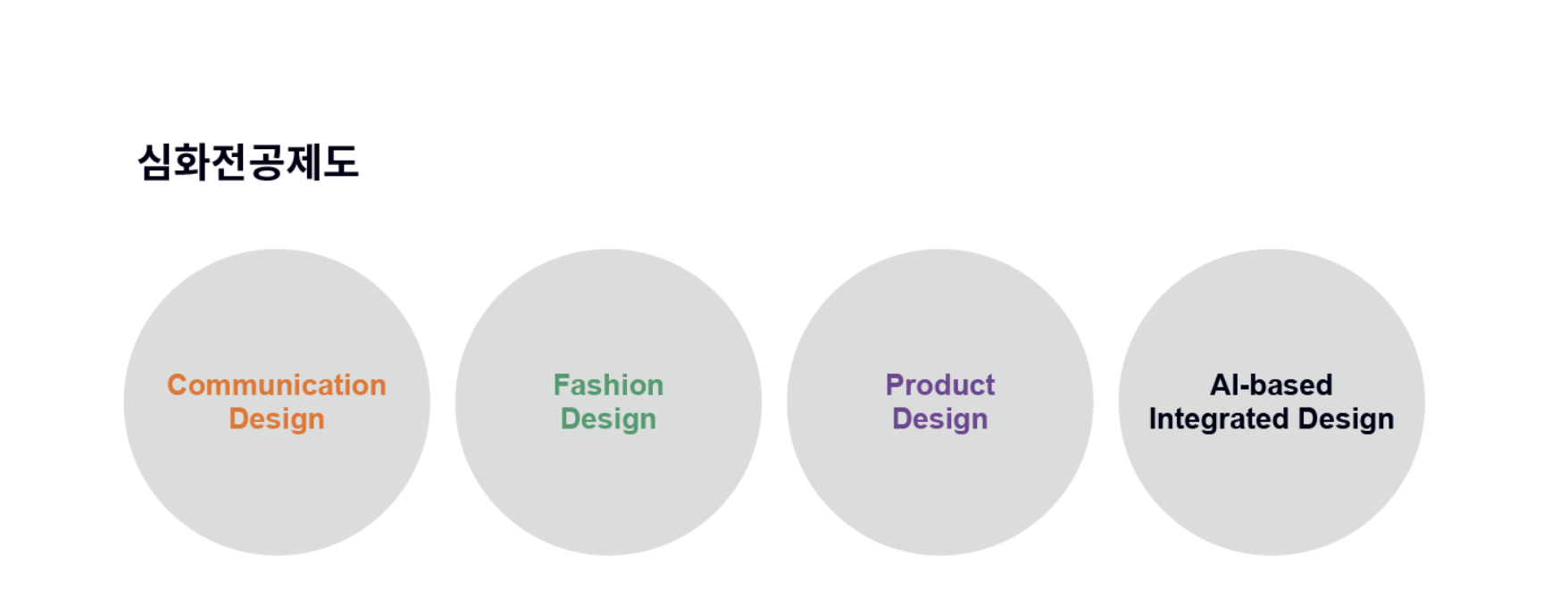
There are three main majors: Communication Design (C), Fashion Design (F), and Product Design (P). Students must complete foundational and advanced coursework in at least two of these areas. Additionally, the curriculum includes programming to cover digital tracks, VR, UI/UX, and more, as well as theory-related courses that cover design history, aesthetics, and trends. Students who wish to pursue a more in-depth study of a particular area may earn additional credits to complete an advanced specialization in Fashion Design, Visual Design, Product Design, Digital Design, or Integrated Design. Furthermore, if the student is interested in the field of AI, we also offer an AI Convergence course, which allows students to take AI courses offered by the Department of Artificial Intelligence.
Q. Unlike design departments at general art colleges, the Department of Integrated Design at Yonsei University does not conduct practical assessments for either the “early decision” or the “regular decision” of the college entrance exam. Could you please explain the rationale behind this decision?
The Department of Integrated Design was established to provide training and education to integrated design professionals who create value for human, industrial, cultural, and future societies based on multidisciplinary perspectives and design thinking. In 1996, the Department of Human Environment and Design was established based on the philosophy of the College of Human Ecology, which studies the interaction between humans and the environment. It became the first program in Korea that encompasses and integrates design disciplines from all aspects of human life to educate design/planning professionals. As the role of design evolved to encompass both the industry and society as a whole, the department renamed itself the Department of Integrated Design in 2024 and enhanced its approach to human-centered, integrated design education, thus ensuring that it aligns with the ever-changing social, cultural, technological, and future landscape.
In contrast to the design department, which is part of the College of Fine Arts and focuses on training artists, our department employs an appropriate selection method. Our objective is to select and train balanced talent with creative and analytical abilities rather than practical skills, who will contribute to society and humanity. However, we do occasionally attract some truly exceptional students who possess both excellent practical skills and impressive academic records. The prioritization of creativity, analytical skills, and planning extends to the university’s graduate school, which is home to some of the country’s most world-class design research.
Our department operates the following specialized labs: Visual/Brand Design Lab (Prof. Hyunju Lee), Fashion Design Lab (Prof. Jihyun Lee), Digital Media Lab (Prof. Sangwon Lee), Design for Social Innovation and Sustainability (DESIS) Lab (Prof. Joonsang Baek), Communication/Integrated Design Lab (Prof. Soyeon Kim), Design for Sustainable Behavior Lab (Hyunjae Shin), and Digital Fashion Design Lab (Eunkyoung Yang).
Q. What are the main student activities?
The most notable activities are the end-of-semester project exhibition and the graduation exhibition, which showcase creations from the DesignX course, a mandatory course for graduating students each year. The Assignment Exhibition is a presentation of design projects from all practical courses in the Department of Integrated Design created throughout the semester. It is an on-campus exhibition held at the end of the semester. The exhibit has become an opportunity for professors and students to discuss their work, further develop their output, and share information about the course. The top students in each subject are awarded Green and Red S-Awards, while the students with the highest overall ratings across all subjects are presented with Blue S-Awards and Crystal Trophies. Furthermore, the results of the exhibit are available online for interested parties to view.

The Graduation Exhibition is an event in which graduating students present their work from the DesignX course. The rise of innovation through design has led to an emphasis on an issue-driven approach that uses design thinking to define complex problems and propose creative solutions. DesignX is a project course that is an updated version of the former “graduation work studio,” reflecting societal changes in the expanding role of design. Students choose a variety of issues, problems, and open topics, referred to as “X,” and explore creative and innovative ways to solve design problems through an integrated and interdisciplinary approach. DesignX will equip you with the ability to address issues across industries and society from a design perspective. This exhibition is also available online.

Q. What are the primary career pathways pursued by our graduates?
Following graduation, students may choose to specialize in one of four areas: communication design, fashion design, product design, or digital design. Specifically, you can enter the fields of service design, UX/UI design, VMD, colorist design, design trend planning, fashion information planning, marketing strategy, furniture design, digital fashion design, digital fashion content planning, virtual fashion service design, editorial design, exhibition design, interface design, interaction design, AR/VR content design, app design, design strategy analysis, design management, business design, design policy, social enterprise, design research institute, etc.
Our graduates have gone on to work at the Nike USA Headquarters, Samsung Electronics Design Management Center, LG Electronics Design Lab, and Amorepacific, and they hold professorships at Hongik University and Kookmin University. Some individuals have pursued careers in government organizations such as the Patent and Trademark Office. Ultimately, the career depends on the individual’s professional preferences. The on-campus start-up fostering program also facilitates the establishment of design services and design business start-ups. There are numerous opportunities for practical connections with industry, including domestic and international design-related competitions and industry-academia cooperation projects as well as support for studying abroad.
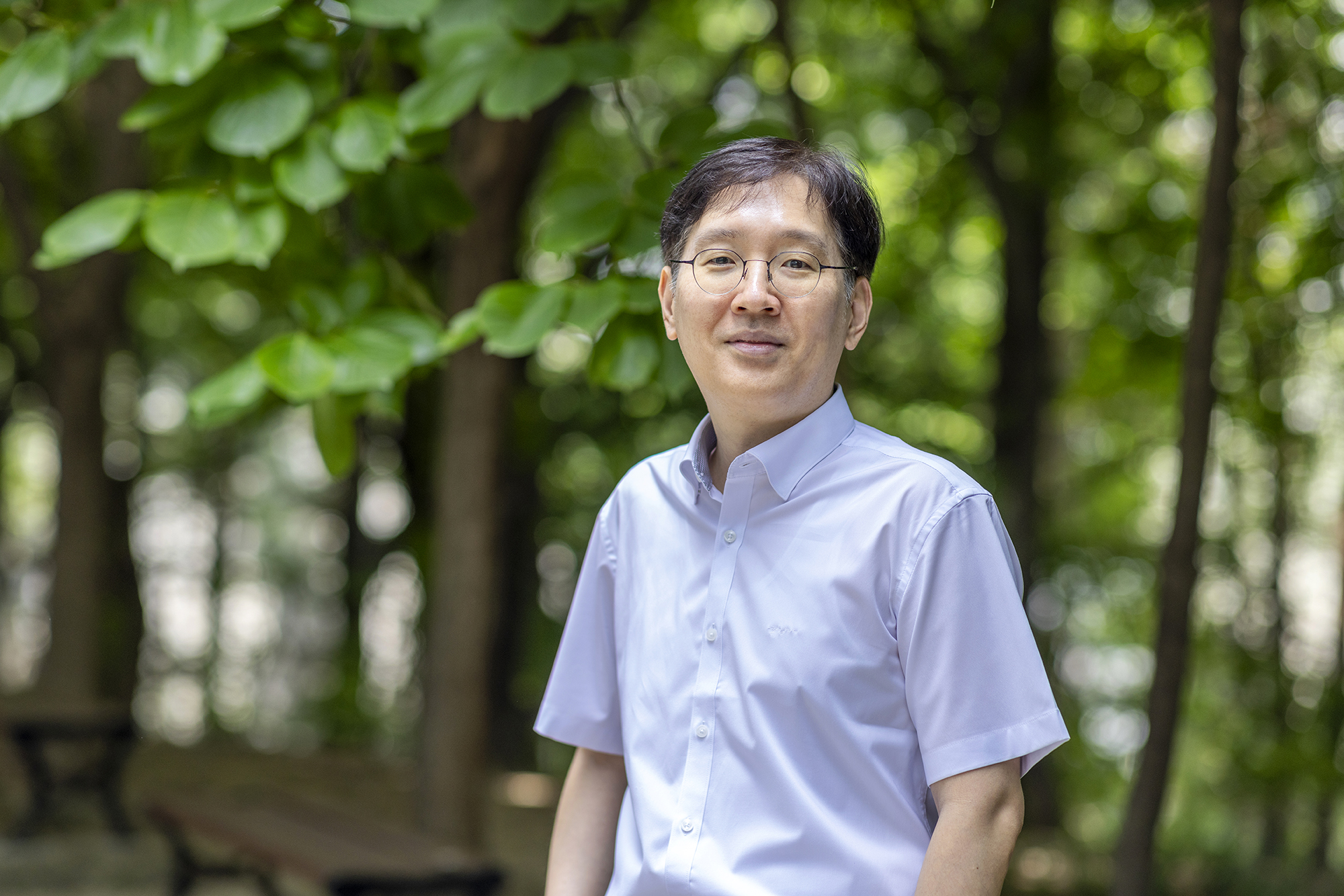
“Design is a fascinating field, and the Department of Integrated Design at Yonsei University offers diverse options. The close relationships with professors and fellow students make it a great place to grow.
Both faculty and alumni are dedicated to improving the department.”
Prof. Sangwon Lee / Department Chair
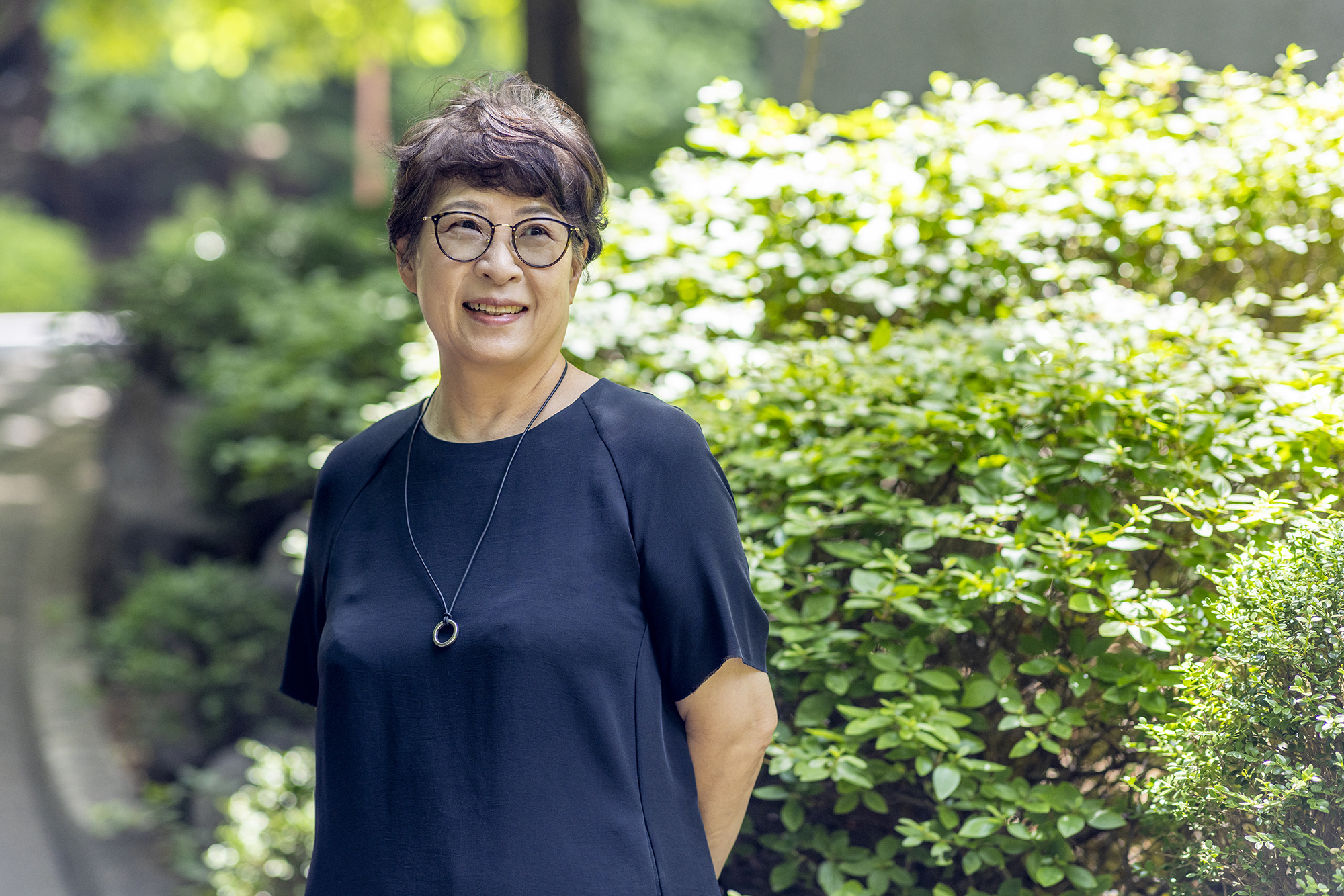
“Our department was the first to create and teach the concept of integrated design, both domestically and internationally. By learning integrated design, you will become a leader in planning and shaping society’s future
and enrich your own life with insightful design.
The department plays a vital role in developing the most important skills and values in this era of ‘communication and integration.’”
Prof. Hyunju Lee
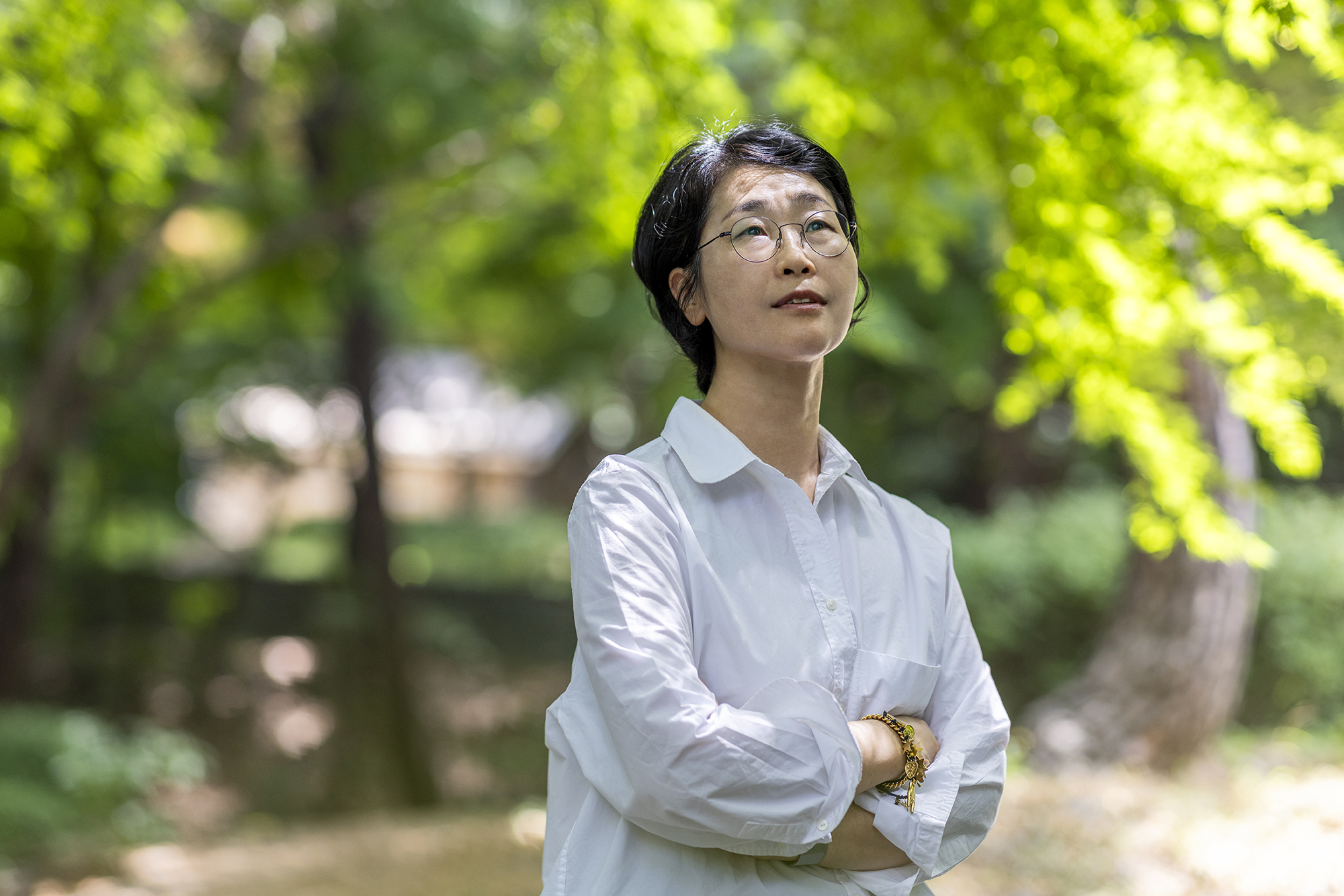
“Our mission is to push the boundaries of design’s value and possibilities,
and the Department of Integrated Design is a hub for navigating challenges with a clear vision for change.”
Prof. Jee Hyun Lee
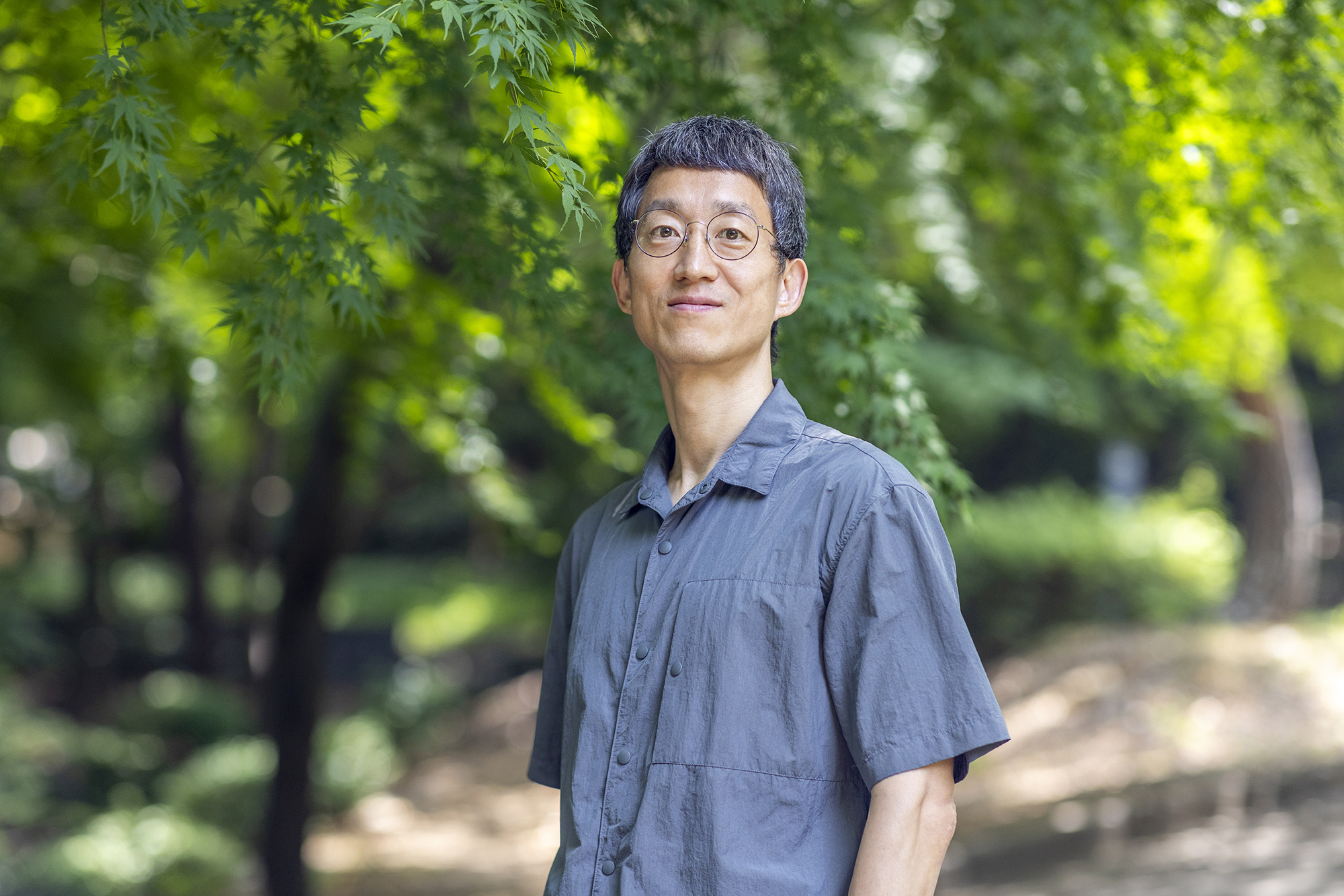
“If you want a set menu, not a la carte, come to the Department of Integrated Design.”Prof. Joon Sang Baek
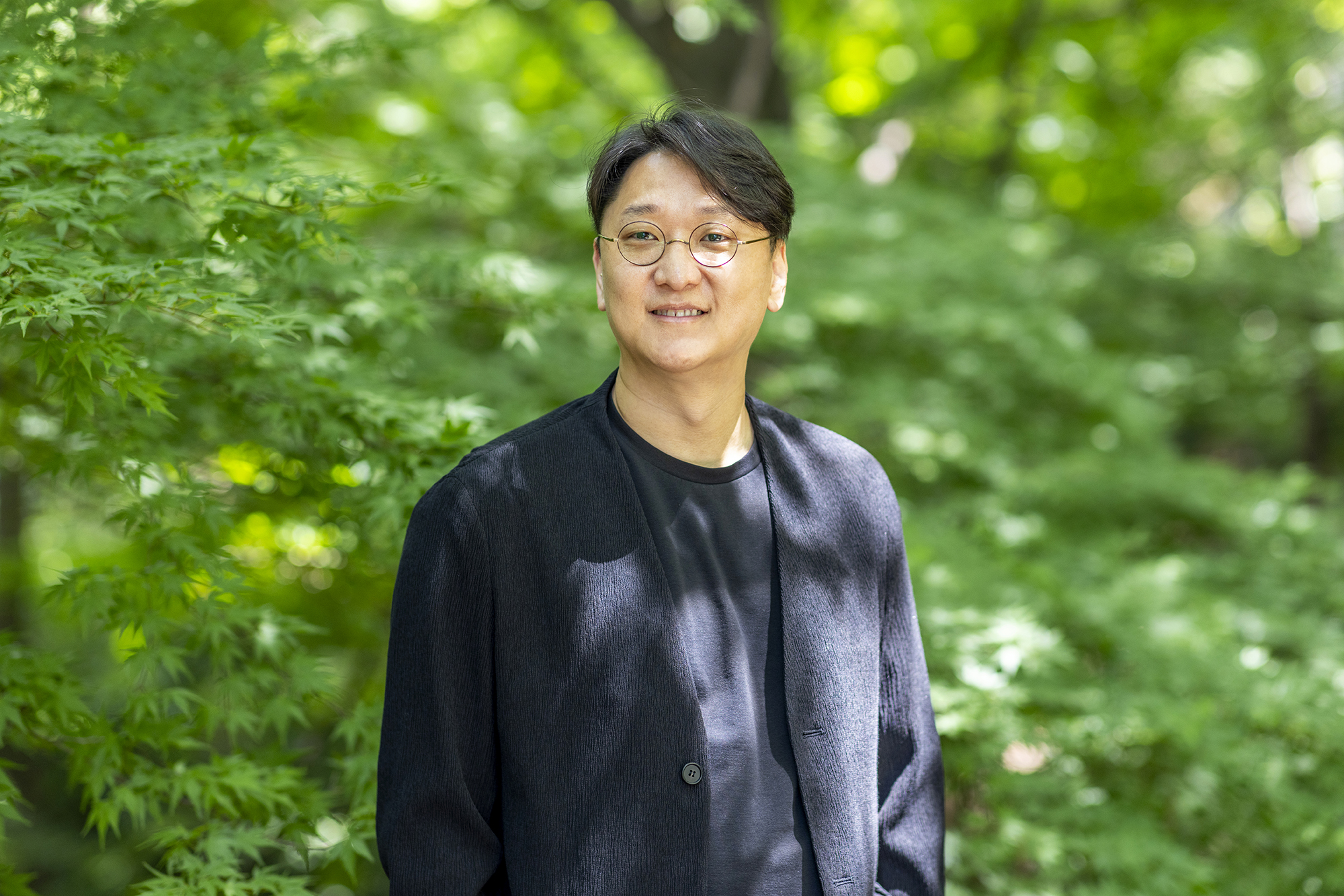
“We strive to go beyond user-centered design and explore, with our students, the role of design in the future,
thus building their capacity to address complex societal challenges.”
Prof. Hyun-Jae Shin
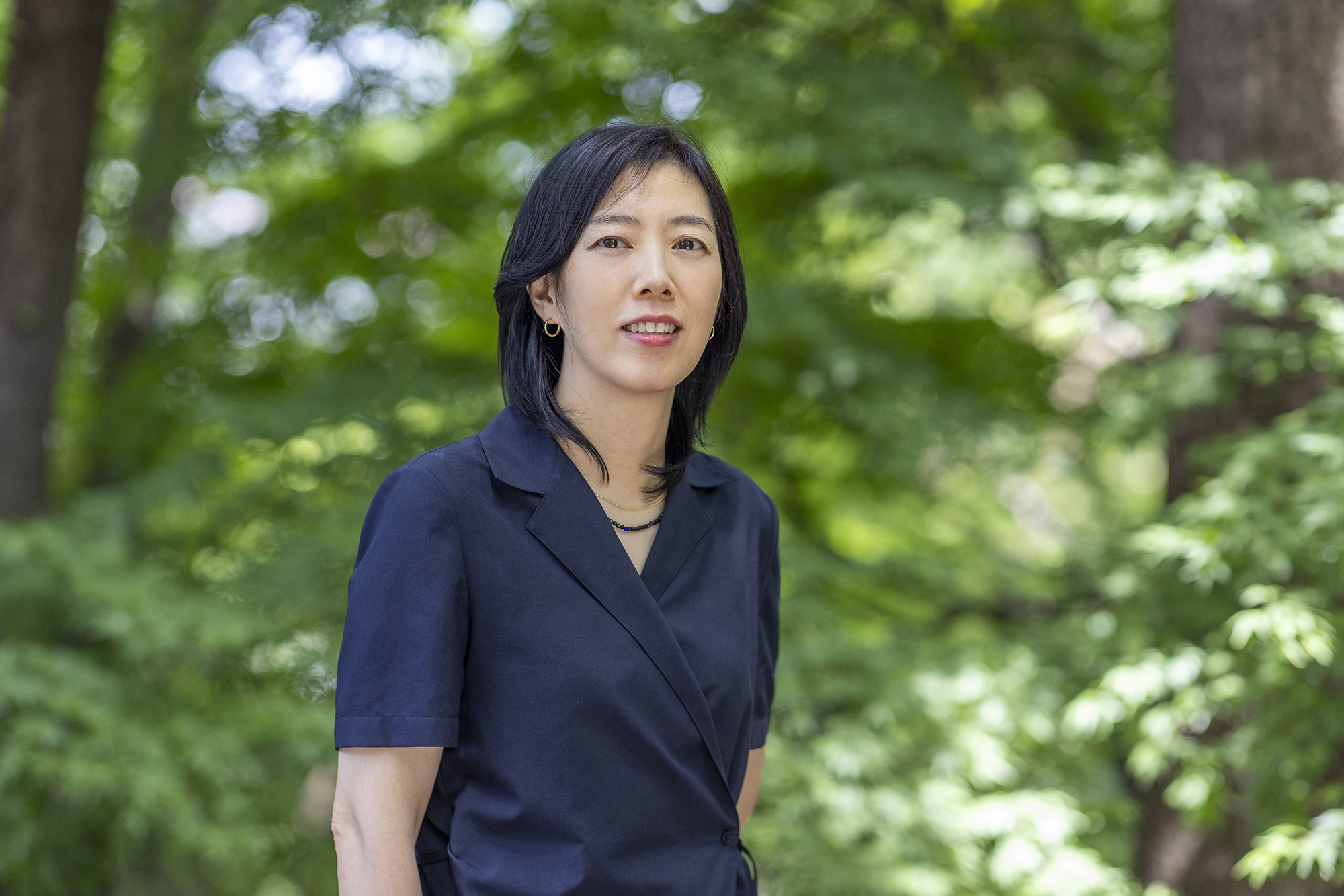
“For design to have a meaningful impact on people’s lives, having an understanding of and empathy for a diverse range of backgrounds is essential.
At the Department of Integrated Design, we go beyond traditional design education, sharing the unique perspectives and expertise of various design disciplines and developing critical thinking and problem-solving skills together. We believe this education will be an important foundation for designing a better future.”
Prof. Eun Kyoung Yang
show mobile menu
mobile menu

